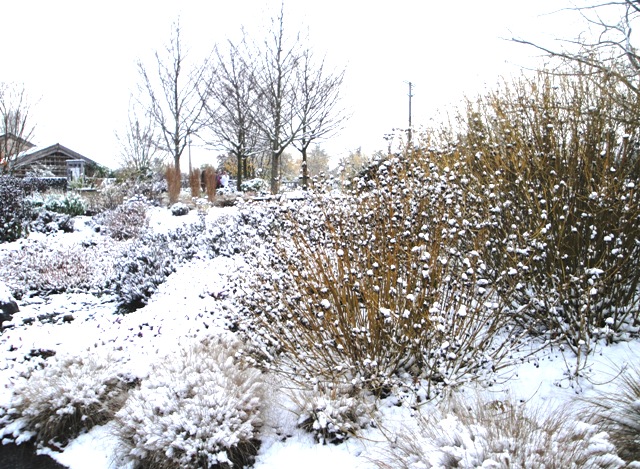January 2011 Plant Profile: Cornus sericea ‘Flaviramea’
The winter landscape is incomplete without the presence of twig-dogwoods. Their stately, yet elegant stems, vibrant color and imposing form in the garden is remarkable. What’s more impressive is their adaptability and ease of growth. They are tolerant of most soils, are drought tolerant once established and the ability to recover from almost being mowed down to the ground each spring and produce brightly colored stems the following winter is extraordinary. From a plant production point of view, they root easily from natural layers (when stems come into contact with the soil and begin forming roots) and a ecological restoration technique called “live-staking”, where sections of mature stems are simply plunged into a container or directly into the ground and root. These cut stems are also prized by florist and the slimmest stems are used for basket-weaving.
The one represented here is a striking stand of them at the Center for Urban Horticulture’s Soest Garden flanked my various ornamental grasses, heaths and heathers create an amazing, low-maintenance plant combination that anyone can replicate in their home gardens.

Common Name: Yellow-twig dogwood
Location: CUH: Soest Garden South Slope, WPA: Witt Winter Garden Family: Cornaceae
Origin: Garden Origin
Height: 6-8ft.
Spread: 7-8ft.
Bloom Time: Early Summer
Bloom Type/Color: Umbels of white flowers on the tips of stems.
Water/Soil: Moist to moderately dry. Drought tolerant once established.

